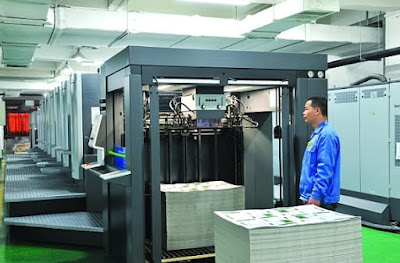Printers are quite common in our daily life and work now. With the increasing popularity, replacing the ink/toner cartridge is a skill that most people must have. Although it's far more easier than a rocket science, improper handling will renter the printer unusable. Below, let's start with how to check the ink cartridge/toner cartridge model, and then how to choose a suitable consumable for the printer, before learning to change them in the correct way.
How to check the ink cartridge/drum model
There are many types of printers, and the consumable items that are compatible with them are also different. Therefore, you need to choose according to the printer model when replacing the ink/toner cartridge. The easiest way is to check the label of the ink cartridge/toner cartridge itself, such as the HP 131A series toner cartridge model shown as in the figure below:
The consumable codes of Brother Color Toner Cartridges can be found on the toner cartridge label beside the warning label of the fuser inside the printer (as shown below).
How to install the ink/toner cartridge correctly
Before replacing the ink/toner cartridge, make sure that the printer is turned on so that the device can recognize the newly replaced cartridge.
1. Replace cartridges for all-in-one printers
- Check whether the model of the ink cartridge to be installed matches the model of the printer.
- Open the ink cartridge access door, gently press the ink cartridge down to release it and pull it out of the slot.
- Take out the new ink cartridge from the package and tear off the package of the print cartridge, and carefully tear off the plastic tape.
- Pinch the ink cartridge so that the front part is slightly inclined upward, and then slide the ink cartridge into the slot.
- Until you hear a "click" sound, it means that the ink cartridge has been locked in place by the base.
Notice:
When installing, please install the color ink cartridge on the left and the black ink cartridge on the right
Do not touch the ink nozzles or copper contacts when attaching the ink cartridges. Touching these parts will cause ink clogs, no ink jets, and poor electrical connections.
2. Split printer cartridge installation
- Check whether the model of the ink cartridge to be installed matches the model of the printer;
- Open the access door of the printer's ink compartment, and after the printer is completely stationary, press the tab on the front section of the old ink cartridge to release it and take out the ink cartridge;
- Take out the ink cartridge from the package and then pull the orange pull tab backward;
- Hold both sides of the ink cartridge, unscrew the orange protective cap counterclockwise and remove;
- Gently pull the tab to move it away from the ink cartridge;
- Turn over the ink cartridge so that its contacts are facing down, and align the color of the label with the color dot on the ink cartridge;
- Slide the ink cartridge into the printer card slot and press until you hear a "click" sound, which means that the ink cartridge has been locked by the base.
Notice:
Make sure to completely remove the orange pull ring and plastic packaging before removing the orange protective cap, otherwise it will easily cause the risk of ink leakage
When pulling the tab, do not make the tab bend outward more than 1.27 cm (0.5 inch), because if you move it out too far, it may damage the ink cartridge and cause the tab to break
3. Laser printer toner cartridge installation
- Check whether the model of the toner cartridge to be installed matches the model of the printer;
- Open the toner cartridge door and pull out the toner cartridge cartridge, grab the handle on the old toner cartridge and pull it up vertically to take it out;
- Take out the new toner cartridge from the packaging box, remove the orange plastic protective material at the bottom of it, and be careful not to tear off the protective tape on the toner cartridge;
- Hold the handle of the new toner cartridge and insert it into the corresponding slot;
- Pull up the pull tab on the left side of the toner cartridge vertically, tear off the protective tape completely and discard it;
- Just close the toner cartridge and the hatch.
Notice:
Do not touch the green roller (photosensitive drum) at the bottom of the toner cartridge, as fingerprints will cause print quality problems











